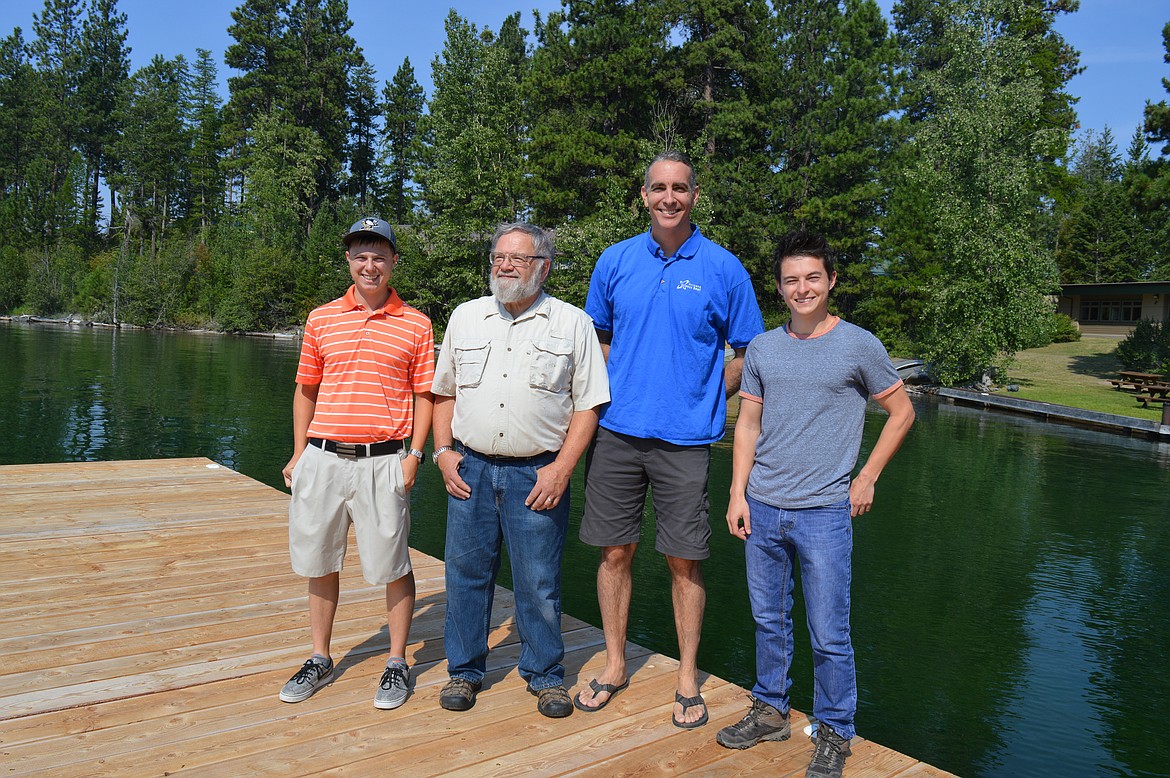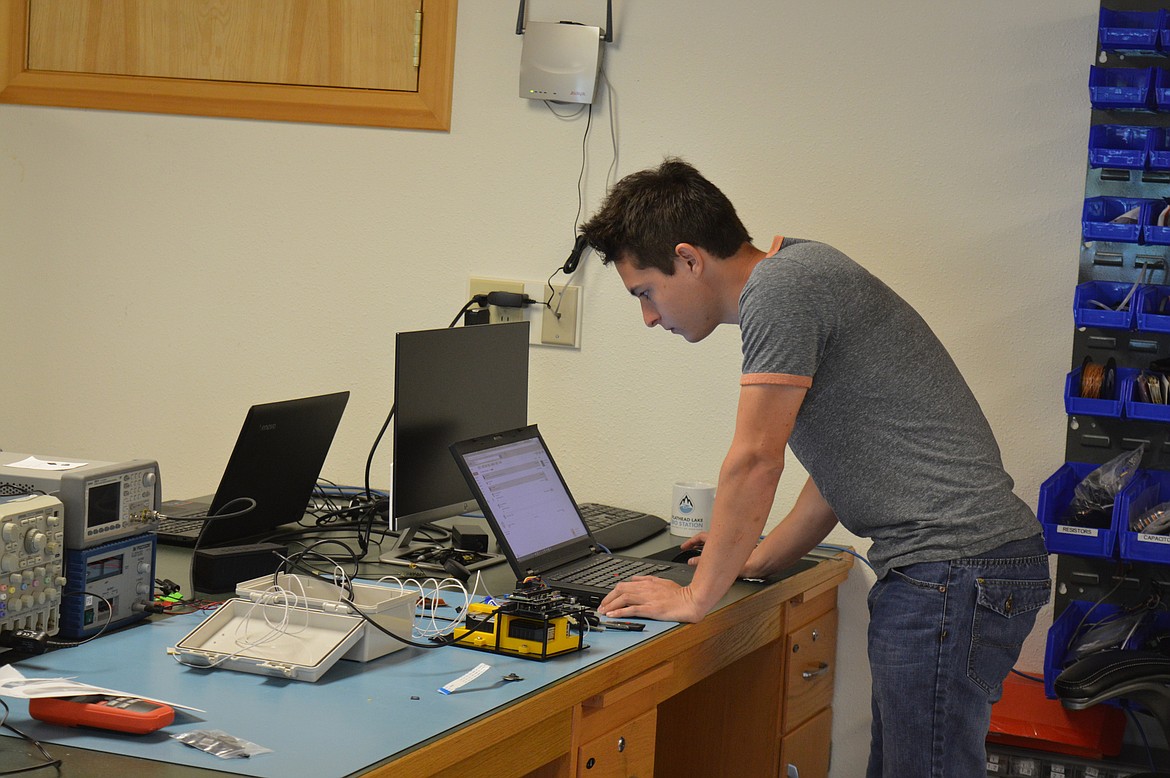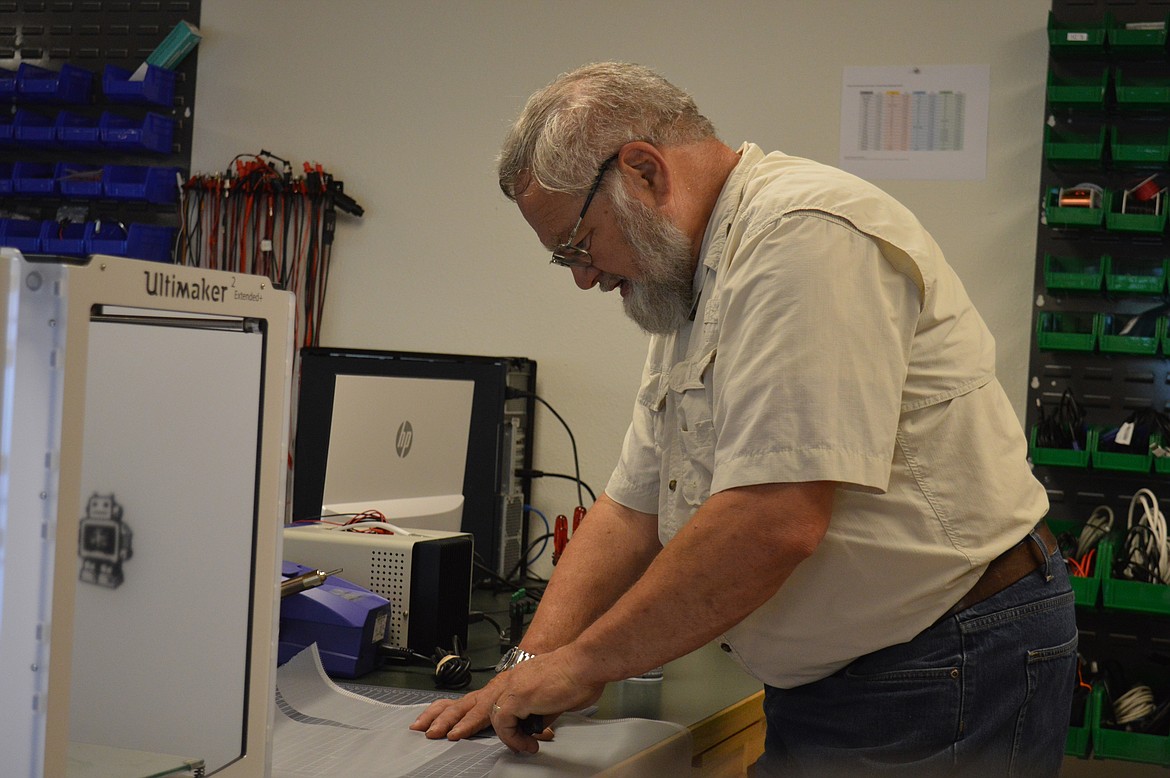Team creates device to find, fight mussels
The pristine waters of Flathead Lake that have supported local residents’ way of life for centuries are being threatened by invasive species that have devastated lakes and waterways across the country.
The arrival of the first documented zebra and quagga mussels in Montana could mark the beginning of the end for the crown of the continent’s signature landscape, according to experts at the Flathead Lake Biological Station (FLBS).
These invasive species have infested lakes in almost every state in the U.S., corrupting indigenous ecosystems, clogging drainage and irrigation systems and crashing the economical and recreational value of beaches and harbors.
Dr. Cody Youngbull, one of the station’s lead physicists, called the mussels the No. 1 threat currently facing the lake.
However, thanks to a new device that was invented, designed and manufactured by Youngbull and his team, hope is now emerging in the fight to keep the mussels from invading one of the nation’s last strongholds.
The team’s groundbreaking research in the field of environmental DNA (eDNA) has produced the first digital PCR, or DNA-detecting, device of its kind.
Every living thing produces DNA, and by taking water samples and screening them for certain types of DNA, Youngbull and his team can now determine whether a species is present or not without ever having to see it.
The PCR, or polymerase chain reaction, device can not only detect, but also measure the presence of minute traces of specific kinds of DNA, such as zebra or quagga mussels, in water samples.
PCR technology in itself is nothing new, according to Youngbull. The technology first won a Nobel Prize in the 1980s, and scientists across the globe now utilize it for different purposes. However, the systems used to implement the technology to date have required four different bulky devices that take up enough space to fill a buffet table and cost upward of $200,000, according to Youngbull.
What is revolutionary about the FLBS team’s device is the miniaturization of the devices, making the whole system compact enough to fit on a board the size of a laptop and capable of being transported in a backpack.
This improvement will allow researchers to take the device into the field, taking and testing samples on site to produce results in as little as an hour.
Before, water samples had to be collected by dozens of personnel and taken back to a lab where they would be tested one by one, a process that limited the speed and quantity of sample testing.
“This is the first time all of that has been manufactured into a small, form-factored, battery-operated, field-deployable system,” Youngbull said.
The completed device is the result of about eight years of research and testing by Youngbull and his team, Zane Lindstrom and Rod McNeil.
Lindstrom works as the team’s electronics specialist, designing, coding and creating the many intricate circuit boards that control the device.
McNeil manufactures and assembles the various other materials used to build the device.
Despite having specific roles in the system’s creation, Youngbull said the final product was a culmination of “everyone doing everything.”
THE DEVICE works by collecting two-liter water samples from one area of the lake. Those samples are then filtered to removed any debris and added to a control substance, or primer, that allows the device to look for a specific type of DNA by matching it to a sample, or template, of that same kind of DNA.
The filtered water gets sucked into the machine through small tubes comparable in diameter to that of pencil lead. Those tubes carry the water, which is then separated into thousands of individual droplets, only .8 nanoliters each, through the device which looks for the presence of the desired DNA by comparing it to a template.
Each droplet either contains that DNA or does not. The droplets that contain DNA are counted as ones and those that do not contain DNA are counted as zeros.
The system then counts the number of ones to determine the quantity of DNA in each sample and prints out the results.
The entire process takes about 50 minutes to produce results, and, when taken out into the field, can be repeated several times over the course of one day.
What this means, according to Youngbull, is that one sample can be taken and tested in one spot, and then another can be taken and tested from the water right next to it. This produces a gradient, or a scale, of where the presence of that DNA increases and decreases. Researchers can then follow that gradient to hot spots and effectively track the source of that DNA.
Right now, Youngbull and his team plan to use what he calls “their baby” to help aggressively fight an infestation of invasive species.
However, he said, the potential for the technology is even greater.
“In the future, you’re going to be able to take a water sample in the lake and count the number of bears in the Flathead Valley,” Youngbull said. “eDNA promises to be able to count all kinds of species. Not just invasive species, but indigenous species.”
And it won’t just be able to count a species, he said. It will also be able to track the health of a population, as well, determining whether a population is healthy or sick.
“It’s going to displace a lot of tried-and-true methods of animal quantification,” he said.
The potential use of his device, which has proven more accurate and precise in its measurements, will also drastically cut costs in the practice of determining animal populations, Youngbull said.
The team said their device could also pave the way for the creation of fully autonomous devices that could be attached to buoys and left to transmit a live-stream of data to any mobile device.
STILL, HE said, there are a number of challenges to be overcome before that potential can become a reality.
Variable conditions such as water temperature, source concentrations, sunlight and water currents have to be studied and understood in relation to the results the samples produce when tested before greater strides can be achieved with the technology.
That research in itself will take years, but, Youngbull said, it is possible and the potential is there.
“The whole field of eDNA is simply exploding,” he said. “That time is coming, and this instrument will play a key role in that.”
Right now, the team has one device complete and operating. So far, the system has only been used in the lab to test samples brought in because of a few “bugs” in one of the system’s pieces.
However, the device has been used to test multiple water samples from the lake, none of which have, so far, indicated any presence of invasive mussels.
Youngbull said the team is only weeks away from their first field test, but the completed device is ready now to be replicated and sold to collaborators seeking to utilize the technology.
Each new system will take three people a total of about a month to produce, from manufacturing, which occurs here in the Flathead Valley, to completion.
Though the full potential of this device and the years of research it represents is still being realized, Youngbull said he has high hopes that, for now, it will help preserve the pristine state of the lake for generations to come.
Reporter Mary Cloud Taylor can be reached at 758-4459 or mtaylor@dailyinterlake.com.










